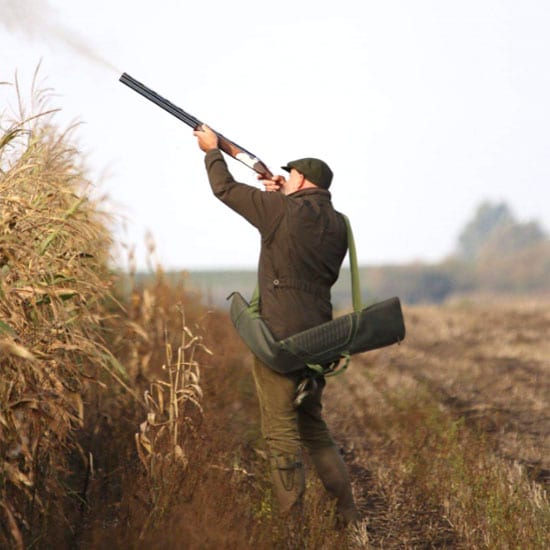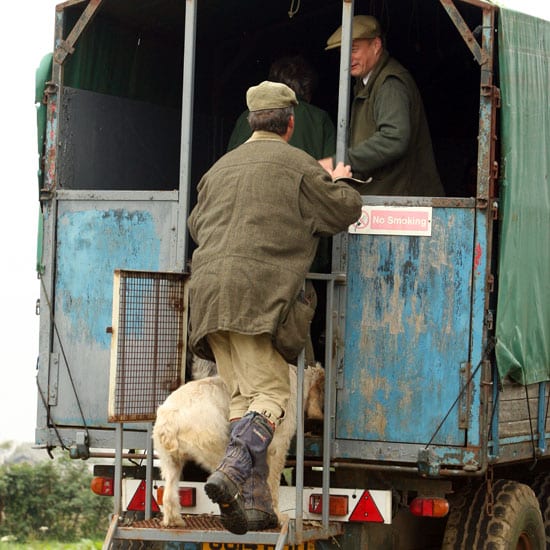Game shoot health and safety

David Boden
The ramifications of Covid-19 have restricted the day-to-day activities taken on by shoot managers and captains. However, there are things we can focus on during these very uncertain times such as reviewing our game shoot health and safety.
Health and safety is something that worries a lot of people, especially on shoots. What we need to remember is it’s something we all practice daily without giving a second thought. We very often get to a wooden stile which has rotted and make the decision not to use it, this is dynamic risk assessing.
So, how can we ensure that everyone attending our shoot is fully briefed before attending? Communicating to all attendees prior to the event may help with this. Below is an outline of everything you should find in a letter from a shoot that undertakes good health and safety guidelines.
You should also include a copy of your risk assessment and your game shoot health and safety policy.
Stage 1: About the shoot
Start the letter with a small introduction on the shoot; how long it has been going, a little about the history, or perhaps a positive comment that outlines how the food chain benefits from the game shot, or ways the shoot enhances and protects local wildlife.
This section should also include a brief timetable of the day including start times, the full address for the meeting location, breaks and refreshments.
A particularly useful inclusion is a list of three key contacts for the day. Perhaps contact details of the keeper, shoot captain or a key member who could assist if you were to get lost or had a question before the day.
Stage 2: Insurance
Remind Guns, guests, beaters and pickers-up that they must have insurance. All attendees must have public and personal liability insurance cover of at least £10 million.
Stage 3: Gundogs
Gundogs are an essential part of any game shoot; they are a key part of flushing and retrieving wounded game. You should include a line to say that dogs must be trained and brought at the owner’s risk.
Guns must not tie dogs to themselves while shooting as safety risks are too high.
Stage 4: Shoot etiquette
The shoot captain will brief Guns on safety and expectations on the morning of the shoot.
Therefore, use this section of the letter to inform them of shoot etiquette. State if only fibre and biodegradable wad cartridges are to be used and that all cartridges must be collected after each drive. (Click here to read the latest announcement on sustainable ammunition).
All Guns must bring their shotgun certificate to be viewed on the day if required, with their guns empty and stored in slips between drives.
Also, identify the intended quarry to allow people to bring the correct equipment.

Stage 5: Safety equipment
Remind all attendees they should wear ear protection where required.
Eye protection is optional for Guns, beaters and pickers-up. If questioned why for the latter two, advise them that it is easy for a twig or branch to catch your eye when walking through woodland.
All attendees need to be reminded of the importance of sensible footwear for encountering uneven terrain and waterproof clothing. The above should also be written in your risk assessment.
Stage 6: Vehicles
Use this section to highlight the importance of suitable vehicles. All vehicles need to be road legal and in good repair as they may be driven off-road during the day. It may be an idea to include details of someone who can provide them with alternative transportation for the day if their vehicle isn’t suitable.
Parking and access need to be outlined here. Highlight safe driving and the need to be aware of their surroundings.
Stage 7: First aid
Ideally members of your shoot should hold a valid first aid certification.
Where this is the case, enquire whether they are happy for their details to be shared should first aid be required on shoot day.
The more people on your shoot that hold a first aid qualification, the less pressure there will be on specific people if a need arises.
If you would like to get more people trained, especially shoot captains and gamekeepers, click here.

Stage 8: Reminders
Remind attendees to take extra care on uneven surfaces, especially when confronted by hedges, barbed wire fences, brambles, thorn bushes and tree branches.
Stage 9: Smoking
Outline where smoking is prohibited on your shoot for example the shoot lodge and any vehicles owned and driven by shoot operators.
Stage 10: Shoot saboteurs
Shoot saboteur protocol is an important issue. Make sure all attendees are aware of the procedure.
If saboteurs are seen near to live shooting or interrupt the Guns, all guns should be unloaded and put into their gun slips immediately. All attendees are to return to their vehicles and move to a place of safety.
All beaters and pickers-up will do the same, returning to vehicles or beaters’ transport. Do not engage with them.
For more information on how you can improve your game shoot health and safety, click here.
Main image: © Celine Peniston Bird
